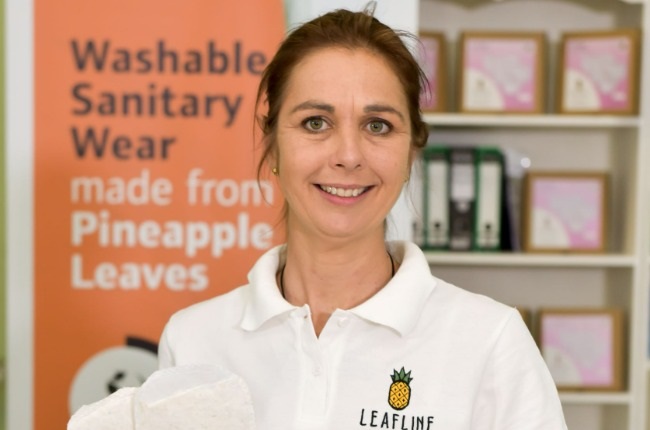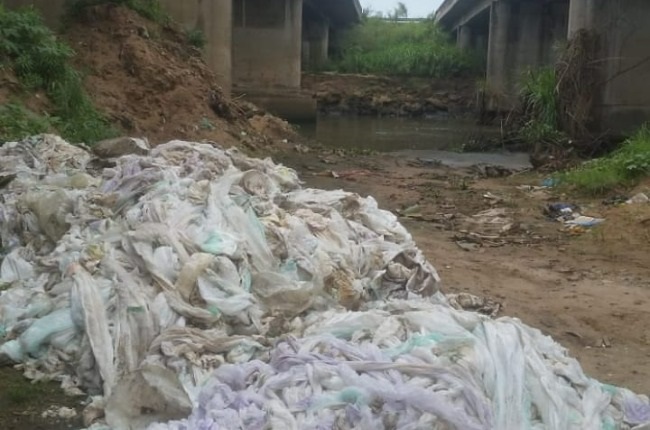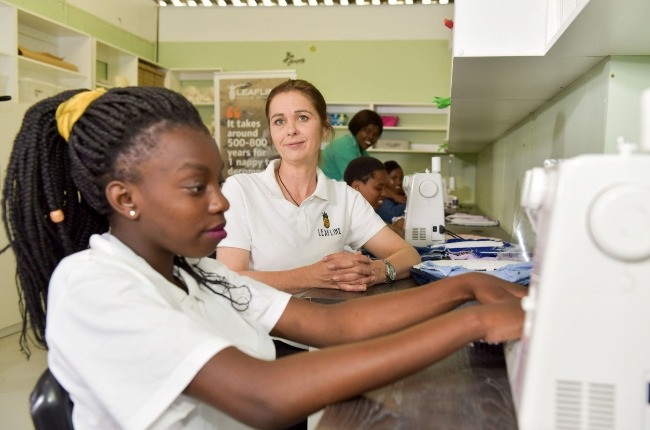
She was working as a beauty therapist in a retirement home in Port Alfred in the Eastern Cape when an elderly lady asked her if she knew of a more affordable option to the disposable adult nappies she was using.
"I noticed how many nappies leave a single home on a daily basis," Candy Androliakos tells YOU.
"This is when I realised the great need for an alternative option.”
Candy desperately wanted to help but had no idea how.
Inspiration struck when she visited the Big Pineapple museum in nearby Bathurst.
Candy saw a billboard on the various uses of pineapple fibres and was surprised to learn they could be used to make reusable nappies.
Not only is it easier on the pocket, it's also good for the environment as it takes between 500 and 800 years for one nappy to decompose and a great many end up in rivers and the ocean.
READ MORE | Plastic fantastic: How two women from Orange Farm are creating ‘leather’ from waste
But extracting cotton fibres from the pineapple leaves is an intricate process.
First, the leaves are separated from the fruit. Then they're scraped by hand before they're washed and dried.
After drying, the fibres are waxed to remove any fibres that have become entangled. The fibres are then knotted.
During the knotting process, each fibre is extracted singly from the bunch and knotted end to end to form a long continuous strand.
The fibre is then sent for warping and weaving.
It took Candy a year to perfect her product and Leafline Washable Sanitary Wear was born.
In 2018, she opened her business selling baby and adult nappies as well as chair and bed protectors.
The businesswoman receives the processed fibres from local farmers before sewing it into their products.
“The fibre we use is for the inner liners of our nappies. The natural fibre is stronger than cotton and absorbs moisture, smell and bacteria," she says.
"The natural fibre is also good for the earth. Because of the strength of the fibre, it lasts up to a year before needing to be replaced."
The nappies have become a hit with pensioners and new parents because they're reusable – they just need to be washed at low temperatures.
“I hope people will become more conscious of the environment when they use disposable items, and begin to make a conscious choice about the products they use," Candy (50) says.
"Hopefully they'll eventually replace the disposable items with washable ones."
READ MORE | Soccer didn't work out so I switched to making furniture from old tyres
In addition to helping people save money, Candy is also ploughing back into her community by employing disabled women to make her products.
“The Eastern Cape has the [country's] highest unemployment rate. Work in our area is scarce," she says.
"I decided to train ladies with disabilities to sew the product and employ them directly. I felt this would give them an opportunity to be employed in a safe, happy environment."
When she's not helping to save a buck and the planet, Candy enjoys long walks on the beach.
“My New Year’s resolution was to do this every week, and I'm delighted to say I've been sticking to it.”
Making garments from fruit fibres is nothing new. People have been making fibres out of banana stems since the early 13th century, in Japan. Banana fibre, also known as musa fibre is one of the world’s strongest natural fibres. Biodegradable, the natural fibre is made from the stem of the banana tree and is incredibly durable. Fibre from pineapple leaves for long has been used by Philippine handicraft artisans to produce cloth, a practice that dates back to Hispanic times. The clothes were said to have reached Greece and African countries many centuries ago. During 19th century, pina fabric was much in demand, not only in Philippines but worldwide.
Sources: fashionunited.uk, textilevaluechain.in
SOURCES: LEAFLINE.CO.ZA, CAPETALK.CO.ZA, BIZNEWS.COM, THE-SUSTAINABLE-FASHION-COLLECTIVE.COM




 Publications
Publications
 Partners
Partners



















